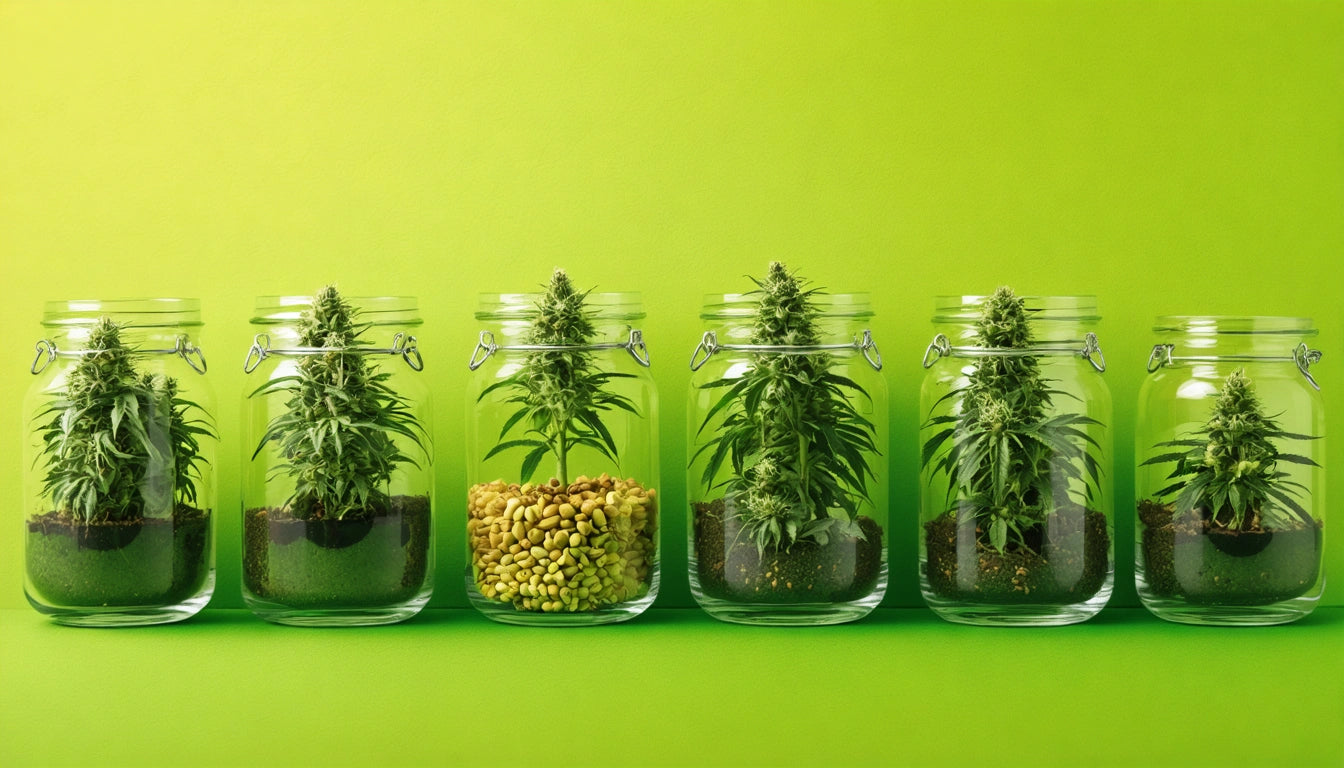Table of Contents
- Understanding Ganja Basics: Seeds, Strains, and Legality
- Essential Supplies for Growing Ganja at Home
- Step-by-Step Guide to Growing Ganja
- Indoor Growing Techniques for Quality Harvests
- Harvesting and Processing Your Plants
- Creating Products from Your Harvest
- Sustainable Practices for Long-Term Cultivation Success
A Comprehensive Guide to Growing and Using Ganja at Home
Growing ganja at home can be a rewarding experience that provides you with a steady supply of high-quality cannabis while giving you complete control over cultivation methods. Whether you're interested in how to grow ganja seeds for the first time or looking to improve your existing grow setup, this guide covers everything from basic cultivation to processing your harvest.
Understanding Ganja Basics: Seeds, Strains, and Legality
Before learning how to plant ganja, it's crucial to understand the basics. Ganja, also known as cannabis or marijuana, comes in three primary types: indica, sativa, and hybrid strains. Each offers different effects, growing characteristics, and medicinal properties.
When selecting seeds, consider factors like growth difficulty, climate compatibility, and desired effects. Premium seeds from reputable sources typically yield better results than random bag seeds. Many beginners wonder how to grow maryjane successfully, and the journey starts with quality genetics.
Always verify local laws before beginning cultivation. Legal status varies widely between regions, with some allowing only medical use while others permit recreational growing with specific plant count limitations.
Essential Supplies for Growing Ganja at Home
To successfully grow ganja indoors, you'll need several essential items:
- Quality seeds or clones
- Growing medium (soil, coco coir, or hydroponic setup)
- Containers with drainage (fabric pots are excellent)
- Proper lighting (LED, HPS, or fluorescent)
- Nutrients specifically formulated for cannabis
- pH testing kit and pH adjustment solutions
- Thermometer and hygrometer for environmental monitoring
- Ventilation system with fans
- Timers for light cycles
- Proper storage containers for your harvest
For storage after harvest, airtight containers with secure lids are essential to maintain freshness and potency while ensuring your product stays safely stored away from children or pets.
Step-by-Step Guide to Growing Ganja
Germinating Your Seeds
The first step in how to grow ganja seeds is germination. Place seeds between damp paper towels on a plate and cover with another plate to create darkness. Keep in a warm location (70-85 °F) and check daily. Once taproots appear (usually 2-7 days), carefully transfer to your growing medium.
The Vegetative Stage
During this growth phase, provide 18-24 hours of light daily. Plants need regular watering but avoid overwatering, which can cause root problems. Maintain temperature between 70-85 °F with 40-60% humidity. This stage typically lasts 4-8 weeks, during which plants develop strong stems and healthy foliage.
The Flowering Stage
To trigger flowering, adjust light schedule to 12 hours on/12 hours off. This mimics fall conditions, signaling plants to produce buds. Flowering lasts 7-12 weeks depending on strain. During this time, plants may need support stakes as buds become heavy. Reduce nitrogen and increase phosphorus and potassium in your feeding schedule.
Indoor Growing Techniques for Quality Harvests
Learning how to grow ganja indoors offers several advantages, including year-round cultivation, better pest control, and privacy. Indoor growers can manipulate all environmental factors for optimal results.
For indoor setups, consider these ganja growing tips:
- Install reflective material on walls to maximize light efficiency
- Use oscillating fans to strengthen stems and prevent mold
- Consider training techniques like LST (Low-Stress Training) or SCROG (Screen of Green) to increase yields
- Monitor and control odor with carbon filters
- Maintain consistent temperature and humidity levels
Many growers use grow tents which provide a controlled environment while containing light and odor. These come in various sizes to accommodate different numbers of plants.
Harvesting and Processing Your Plants
Knowing when to harvest requires attention to trichome development. Using a jeweler's loupe or digital microscope, look for milky white trichomes with some amber coloration. Clear trichomes indicate immaturity, while predominantly amber suggests over-ripeness.
When harvesting:
- Cut plants at the base or remove branches individually
- Trim away large fan leaves (wet trimming) or leave them for dry trimming later
- Hang branches upside down in a dark room at 60-70 °F with 45-55% humidity
- Allow 7-14 days for proper drying until stems snap rather than bend
- Cure in airtight containers, opening daily for the first week to release moisture
Proper curing improves flavor, smoothness, and potency while preventing mold development.
Creating Products from Your Harvest
Beyond smoking dried flower, many home growers explore how to make ganja oil and other derivatives. Cannabis-infused oils can be used for cooking or topical applications. The basic process involves decarboxylating dried flower (heating to activate THC) then infusing it into a carrier oil like coconut or olive oil.
For those wondering how to make ganja from plant material into concentrates, several methods exist:
- Dry sift using fine screens to collect trichomes
- Ice water extraction (bubble hash)
- Rosin pressing using heat and pressure
- Alcohol extraction for tinctures
Each method requires specific equipment and safety precautions, particularly those involving flammable solvents.
Sustainable Practices for Long-Term Cultivation Success
Sustainable cannabis cultivation reduces environmental impact while often improving product quality. Consider implementing these practices:
- Create living soil that can be reused for multiple grows
- Collect rainwater when possible
- Use LED lighting to reduce energy consumption
- Compost plant waste
- Implement integrated pest management rather than chemical pesticides
- Consider renewable energy sources for power-intensive indoor operations
By approaching how to grow ganja plant varieties with sustainability in mind, you'll not only produce cleaner products but also reduce costs over time. The cannabis industry is increasingly embracing eco-friendly practices as consumers become more environmentally conscious.
Whether you're growing for personal use, medicinal benefits, or as a hobby, following these guidelines will help you cultivate quality cannabis at home. Remember that growing expertise comes with experience, so don't be discouraged by initial challenges. Keep detailed records of each grow cycle to refine your approach over time.











Leave a comment
All comments are moderated before being published.
This site is protected by hCaptcha and the hCaptcha Privacy Policy and Terms of Service apply.